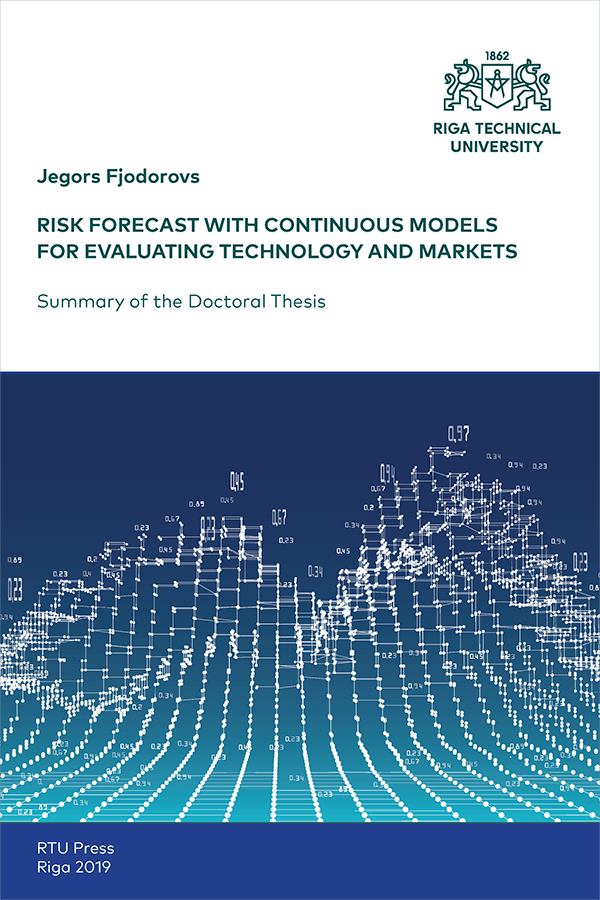Risk Forecast With Continuous Models for Evaluating Technology and Markets
Summary of the Doctoral Thesis
Jegors Fjodorovs, Riga Technical University, Latvia
![]() http://orcid.org/0000-0001-8001-7037
http://orcid.org/0000-0001-8001-7037
Nowadays, a variety of public and private companies around the world use stochastic modelling as prediction tool, in order to determine the expected interest rate term structure, exchange rate, inflation, demand for electricity in different time (or year) periods, derivative pricing, as well as to carry out the optimal government debt management policy, hedging, inventory modelling and various financial assets and derivatives pricing. Therefore, it is essential to predict the future value of financial assets and the macro data. One of the most well-known forecasting tools is Box-Jenkins (1970) autoregressive integrated moving average (ARIMA) model. But Box-Jenkins methodology has its own flaws (it does not account for fat tails and leptokurtotic distributions of an asset returns). Modern forecasting, for example, in finance, faces problems with data heteroscedastity (volatility is not fixed there are rapid changes at different time intervals). Promotion work becomes actual due to the fact that in the world currently a lot of different softwares have been developed and are used to forecast, which take into consideration the forecast error that is usually calculated based on the maximum likelihood method, but none of them checks whether or not the stability conditions are met. Therefore demand for forecasting methods that are suitable to work with serial correlation in data dynamics maters the thesis topic actual nowadays. The result of the thesis are the following model representation and applications: – Heston model representation in a discrete space was derived. – Option reprising formula was evaluated, assuming that the asset price changes are subject to the diffusion process, which takes into account autocorrelation in the rate of return. Based on achieved results revalued option sensitivity measures (Option Greeks) were derived. – The coefficients of a semi parametric regression were found by utilising of Frank copula. – A GARCH (1,1) model convergence time to a stationary solution was estimated. Practical value of the promotion work’s results is associated with the better option pricing technique for any tradable stock. On the other hand, development of copula based semiparametric regression of any time series and use of the results in the forecasting helps to make the right fiscal policy decisions when it comes to macroeconomic data, or helps to make the right decisions regarding the financial market situation in order to take an option buy or sale position. This way one can get the best information to policy decision-makers, traders and other investment – related professionals.
Additional information
| DOI | |
|---|---|
| Publication type | |
| Hyperlink | |
| Defence date | 03.06.2019 |
| ISBN (print) | 978-9934-22-278-8 |
| ISBN (pdf) | 978-9934-22-279-5 |
| Format | |
| Pages | 37 |
| Published online | |
| Publisher | RTU Press |
| Country of Publication | Latvia |
| Publication language |
You must be logged in to post a review.




Reviews
There are no reviews yet.